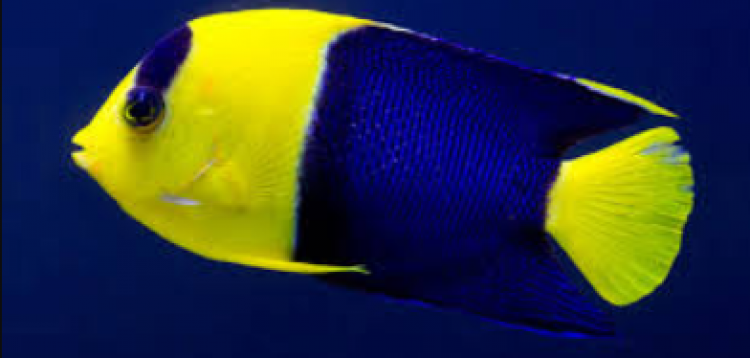- Name:
SixBanded Angelfish
(View AKA's) - Family: Pomacanthidae
- Species: Angel Large
- Scientific Name: Pomacanthus sextriatus


General info about SixBanded Angelfish
Six-Banded Angelfish may be considered reef safe but with caution. It is moderate to care for and many experienced aquarists consider keeping a Six Bar Angel to be a rewarding achievement. To reduce stress, a large aquarium along with many hiding places is required. With its beautifully composed body, the Six-Banded Angelfish makes a captivating addition to any tank. Should be kept in a large tank with plenty of live rock for hiding places. The Juvenile Six-Banded Angelfish fish is considered less risky for a reef aquarium but as it grows it may nip at stony corals with large polyps and eats clams, soft corals. The Six-Banded Angelfish is semi-aggressive towards other similar genus species, other angelfish, and its own species, therefore we suggest you keep them singly or if you still want to keep it in a group it is advisable to keep them in a large and cleverly decorated aquarium.
SixBanded Angelfish Diet & Nutrition
Captive diet of the Six-Banded Angelfish should consist of a wide variety of frozen foods including brine shrimp, mysis, and food materials containing sponge matter. Furthermore, flake foods, and especially those containing Spirulina and/or Nori should be also offered, along with fresh broccoli and macroalgae, as ‘greens’ make up a portion of this species diet, especially the juveniles and subadults.
Determining Sex of SixBanded Angelfish
Six-banded angelfishes are hermaphroditic and usually starts as females before changing into males when the need arises.
Breeding & Spawning SixBanded Angelfish
Difficult to breed and have no reports yet on being bred in captivity.
Common Diseases with SixBanded Angelfish
Six-banded angelfishes are prone to diseases such as White Spot Disease caused by Cryptocaryon irritans which causes scratching and white dots on the fish which results in the fish suffocating from these parasites blocking the gills from providing oxygen. Another common disease is Marine Velvet caused by Oodinium ocellatum which results to a peppery coating giving a yellow to light brown "dust" on body, clamped fins, respiratory distress (breathing hard as seen as frequent or quick gill movements), cloudiness of eyes, glancing off decor or substrate, and possible weight loss.
SixBanded Angelfish Origin
Six-banded angelfishes are widely distributed in the Indo-Pacific region ranging from the Ryukyu Island to Malaysia and Indonesia to Solomon Islands, south to Australia in the Great Barrier Reef.
Caution with SixBanded Angelfish
Juveniles tend to be shy and hide in crevices and caves when first introduced in the aquarium while adults are not as aggressive. The Six-banded Angelfish is prone to nip at stony and soft corals, sessile invertebrates, and clam mantles.
Original Detail
| Name | Species | Family | Scientific Name | More Detail | Added by |
|---|---|---|---|---|---|
| SixBanded Angelfish | Angel Large | Pomacanthidae | Pomacanthus sextriatus | Six-Banded Angelfish may be considered reef safe but with caution. It is moderate to care for and many experienced aquarists consider keeping a Six Bar Angel to be a rewarding achievement. To reduce stress, a large aquarium along with many hiding places is required. With its beautifully composed body, the Six-Banded Angelfish makes a captivating addition to any tank. Should be kept in a large tank with plenty of live rock for hiding places. The Juvenile Six-Banded Angelfish fish is considered less risky for a reef aquarium but as it grows it may nip at stony corals with large polyps and eats clams, soft corals. The Six-Banded Angelfish is semi-aggressive towards other similar genus species, other angelfish, and its own species, therefore we suggest you keep them singly or if you still want to keep it in a group it is advisable to keep them in a large and cleverly decorated aquarium. |
PalaciosAn |



